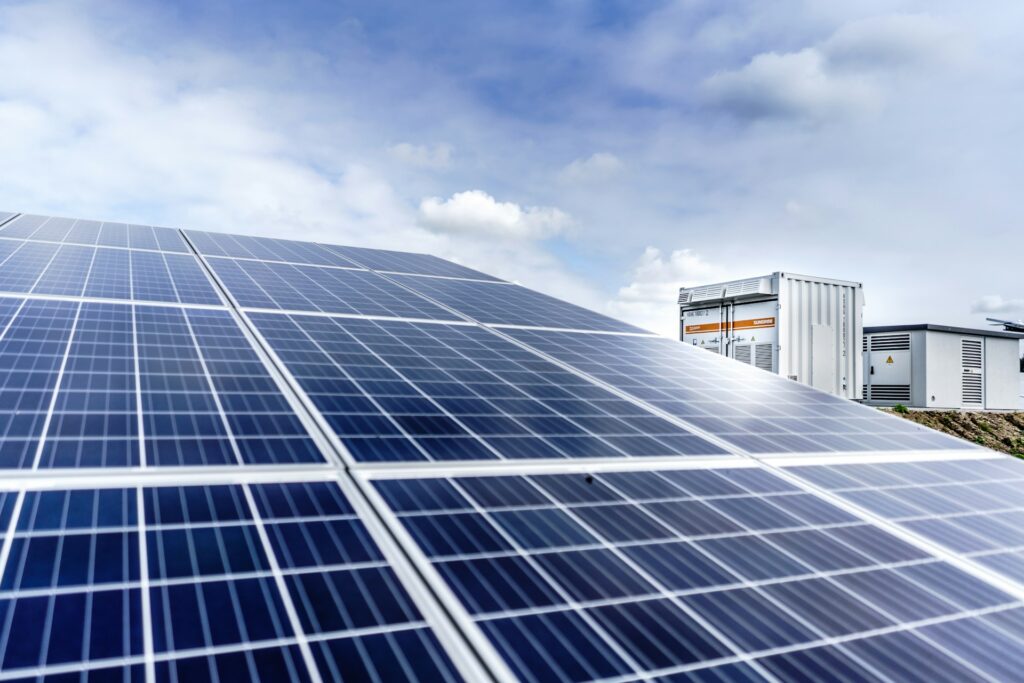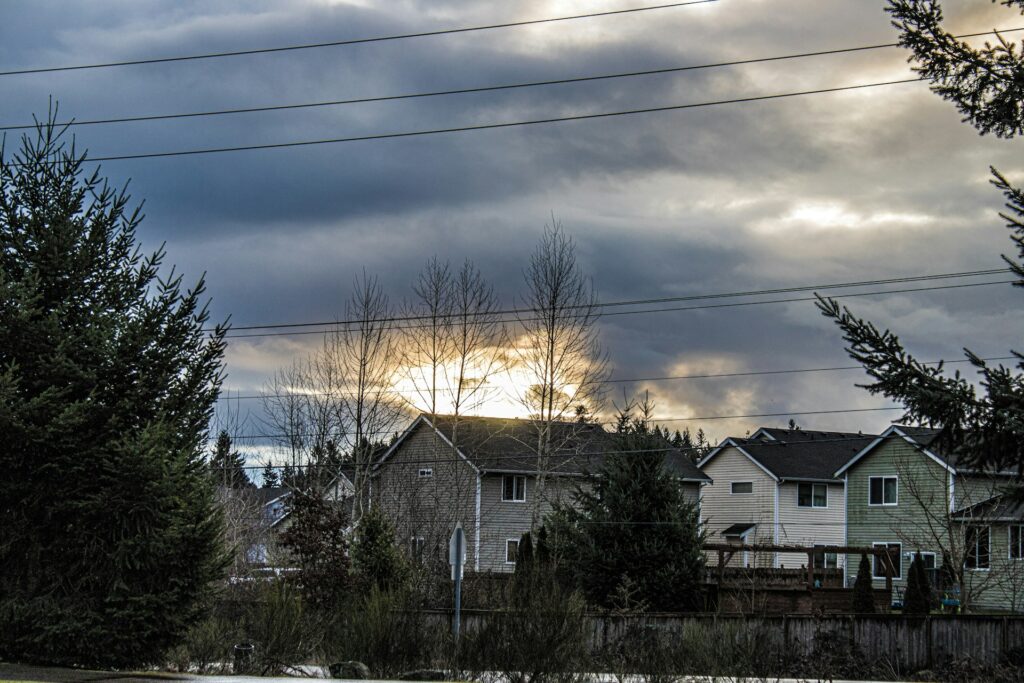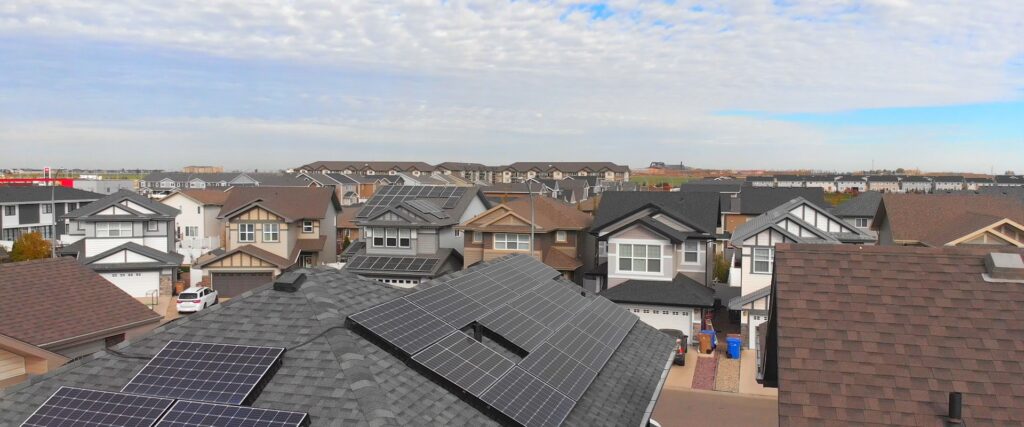Thinking about solar? Here’s the deal: Solar panel energy production is just physics at work. Tiny cells in the panel convert sunlight (photons) directly into usable DC power. A good, modern solar panel on your roof will generally produce somewhere between 1.5 and 2 kilowatt-hours (kWh) of electrical energy every day. That number changes based on the amount of direct sun you get, the temperature, and, most importantly, if anything is casting a shadow on your system.
Solar Panel Energy: Getting the Most Out of Your Investment
If you’re seriously considering putting solar on your home, you’re asking the right question. How much power can your system actually generate? Your biggest goal should be maximizing your solar panel energy output. That’s what saves you the most money and truly gives you that sweet feeling of energy freedom. Let’s talk about how solar energy production works and what really controls the flow of electricity from your roof.
How Does a Solar Panel Actually Make Electricity?
It’s easy to talk about solar panels, but how do they actually make the energy you use to charge your phone and run your A/C?
Understanding the Photovoltaic Process
Solar panels generate electricity using something called the photovoltaic (PV) effect. When sunlight hits a solar panel, it’s not really heat that’s important, but the light itself, tiny particles we call photons. These photons smack into the silicon material inside the panel and literally knock electrons loose. This flow of freed-up electrons creates a direct current (DC) of electricity. It’s pretty amazing when you think about it: light turning straight into power.
Key Components of a Solar Power System
Your home solar setup is a whole team working together, not just the glassy rectangles on the roof:
-
The Panels:
They do the sunlight-catching work.
-
The Inverter:
This is your system’s translator. Solar panels only make DC electricity, but every single appliance in your house (and the entire power grid) uses alternating current (AC). The inverter flips that DC power into usable AC power.
-
The Mounting System:
The hardware that bolts the whole thing securely to your roof.
-
Other Gears:
All the wiring, safety switches, and monitoring systems needed to run the electricity safely into your home.
What Kind of Energy Output Should I Expect?
Most solar panels installed on homes today are rated to produce somewhere between 350 to 450 watts (W).
- That wattage number (e.g., 400W) is the absolute theoretical maximum output, which is measured in perfect laboratory conditions.
- In the real world, you have to account for energy lost due to heat, dirt, and the wiring itself.
Let’s take a single 400W panel that gets about five hours of really strong, direct sun exposure each day (what installers call “peak sun hours”). You should realistically expect that one panel to generate around 1.5 to 2 kilowatt-hours (kWh) of electricity per day.
Energy Output by Solar Panel Wattage
Most modern residential solar panel production units are rated for about 350 to 450 watts (W). That wattage number is their theoretical maximum, measured in a perfect lab environment.
In the real world, let’s say a single 400W panel gets about five hours of really strong, direct sun exposure each day (what installers call “peak sun hours”). You can typically expect that one panel to generate somewhere between 1.5 and 2 kWh of electricity per day. Why is it lower than the max rating? Because the calculation has to factor in real-world energy losses from heat, dust, and wiring efficiency.
Energy Output by Solar System Size
The overall size of your system is measured in kilowatts (kW), it’s just the total wattage of all your panels combined. Since the average household needs about 10,600 kWh per year, most people end up with a system between 6 and 8 kW.
In a good, sunny region:
- A smaller 4 kW system (around 10 panels) could give you roughly 5,500 kWh every year.
- A standard 6 kW system (about 15 panels) might generate about 8,250 kWh annually.
- A larger 8 kW system (around 20 panels) often gets you near the 11,000 kWh mark annually.
Remember, though, that a home in a desert area like Arizona will naturally see much higher annual numbers than one in a rainy coastal city, even with the exact same equipment.
Factors That Affect Your Solar Energy Production
Several factors prevent your system from hitting peak performance all the time.
-
Your Location Matters:
This is the most important factor. If you live in a perpetually cloudy area, your potential solar energy production is lower. The intensity and duration of the best direct sunlight you get, those “peak sun hours,” is the biggest factor.
-
Shading on Your System:
Even a small shadow from a tree branch or a chimney can be a huge problem. Depending on the technology that you have, shading just one panel can actually bring down the power of the entire row of panels. That’s why eliminating shade is priority number one.
-
Angles and Direction:
Installers need to angle your panels precisely. If you’re in North America, they should face true south at an angle that matches your latitude to get the maximum sunlight throughout the year. If they face east or west, you’ll still make power, but less overall.
-
Temperature:
People think extreme heat is great for solar, but it’s not. Solar panels actually become slightly less efficient when they get too hot. Their best performance comes when they’re cool, like around 77°F (25°C). High heat causes a slight drop in the system’s voltage and, consequently, a small loss of power.
-
Dirt and Dust:
Layers of dirt, pollen, or bird droppings act like a filter, preventing light from reaching the PV cells. If you live in a dusty area, cleaning your panels can definitely restore some lost solar panel electricity production.
How to Calculate Your Potential
If you want to feel like a solar pro and check your installer’s numbers, here is the quick math you can use to estimate your potential daily output.
The Simplified Daily Production Formula:
If you want to estimate your daily electricity output (in kWh), you can use this easy equation:
Estimated Daily kWh = (System Size in Watts x Average Peak Sun Hours x 0.75) ÷ 1,000
What are those numbers?
- System Watts: The total wattage of all your panels. If you have fifteen 400W panels, that’s 15 \times 400 = 6,000 Watts.
- Avg. Peak Sun Hours: A regional factor that tells you how strong the sun is in your area. Usually, the average is 4.5 hours.
- 0.75 (Loss Factor): We use this to account for all the real-world performance problems (temperature, wiring resistance, dirt) that happen outside of a perfect lab setting.
Boosting Your Output: Getting Maximum Solar Panel Efficiency
Once you’ve made the decision to go solar, you want to make sure you’re getting the most out of every ray of sunlight. Here are the steps to keep your system performing at its peak.
Choose Smart Equipment
-
Look for High-Efficiency:
When buying, look for a high solar panel efficiency rating, which currently goes up to about 22-24%. This is how much sunlight the panel converts into electricity. If your roof space is limited, higher efficiency means more power in a smaller area.
-
Use Microinverters:
If your roof is complicated or has any shading issues, you should use microinverters or DC optimizers. These devices let each panel operate totally independently. If one panel gets shaded, it won’t kill the output of the others.
Maintain and Monitor Your System Regularly
-
Keep Them Clean:
In dry or dusty climates, a quick rinse once or twice a year can remove enough dirt to noticeably increase your production.
-
Watch for New Shade:
Tree branches grow quickly! Make a habit of checking your roof every season to ensure no new shadows are creeping onto the panels.
-
Monitor Everything:
Use the monitoring app that comes with your system. If you see your production drop suddenly or stay low, that’s your first sign that a component may have failed or something new is blocking the sun.
Consider Battery Storage
Adding a battery storage system is a game-changer. It allows you to save the excess solar panel production generated during the day and use it after sunset. This is the best way to maximize how much of your own energy you actually use, cutting down your reliance on the utility company significantly.
FAQs
-What is a good daily output for a residential solar system?
A well-working solar system should generate about 4 to 6 kWh per day for every 1 kW of installed capacity. So, if you have a 7 kW system, you’d want to see somewhere around 28 to 42 kWh daily, depending entirely on how much sun you get where you live.
-What are the main factors that reduce solar panel production?
The biggest issue is shading even a partial shadow is bad. Next is having too few peak sun hours in your location. Production also dips when panels get super hot and naturally declines a little over the system’s lifetime.
-Can I do anything to make my solar panels more efficient after they’re installed?
Absolutely! Your best moves are all about maintenance. You need to keep the panels clean, especially in dusty areas, and stay vigilant about trimming back vegetation that starts casting new shadows. If your system uses microinverters, you’ll minimize losses from unavoidable shade spots.
-How does panel temperature affect solar panel power?
It is! It’s a common surprise, but panels actually love cool, bright weather. Once the temperature of the panel goes up past 77°F (25°C), the panel’s voltage decreases slightly and becomes less efficient, causing a small dip in your total solar panel energy.
-What’s the difference between “solar power” and “solar energy?”
This is easy to mix up. Solar power is the instantaneous measurement of what your system is generating right now. It’s measured in watts (W) or kilowatts (kW). Solar energy is the cumulative total of what your system has produced all day or all month. It’s measured in kilowatt-hours (kWh).
Conclusion
To get the most out of your solar panels, you really need to make smart decisions right from the start and then keep up with maintenance for as long as the system is running. By understanding how solar power works, choosing high-quality, efficient parts, and factoring in the conditions of your specific area, you can make sure your system delivers all the powerful, clean electricity it promised.
Would you like to get a personalised, accurate estimate for your residential solar system? Contact us at RAR Energy to schedule a free consultation now.





